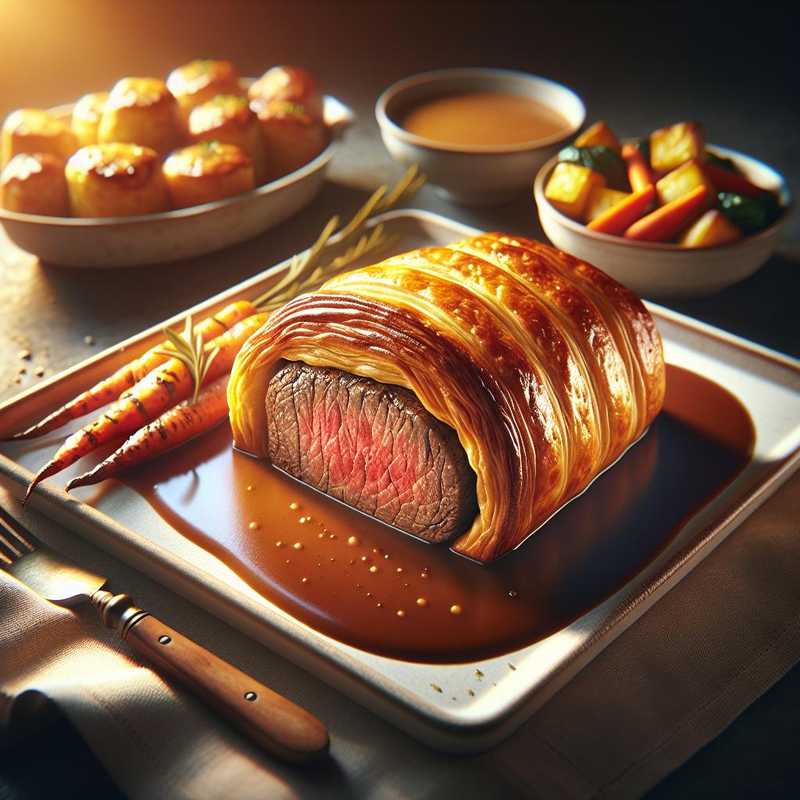Beef Wellington
17/11/2023Beef Wellington is a sophisticated and flavorful dish. It is a traditional British recipe where beef tenderloin is wrapped in a puff pastry envelope with a filling that typically includes liver pâté and mushrooms. However, as Il Cucinologo, I will also suggest an Italian variant. But let’s start with the classic recipe:
Ingredients for Beef Wellington:
- 700 g of beef tenderloin in one piece
- 2 tablespoons of olive oil
- 250 g of champignon mushrooms
- 100 g of liver pâté (optional)
- 1 roll of pre-rolled puff pastry
- 1 egg yolk for brushing
- Salt and pepper to taste
- 1 tablespoon of Dijon mustard (optional)
- 70 g of thinly sliced cured ham
Preparation
- Start by preheating the oven to 200°C.
- Season the beef tenderloin with salt and pepper, and brown it in a hot pan with olive oil on all sides until well-sealed. Remove it from the pan and let it cool. If desired, brush the tenderloin with mustard.
- Clean the mushrooms and chop them finely. Sauté the chopped mushrooms in a pan with a bit of oil until they have lost all their water and are golden. Let them cool.
- Unroll the puff pastry onto a sheet of baking paper. If you’ve chosen to use pâté, spread it over the puff pastry before continuing.
- Arrange the slices of cured ham over the pâté (if used) or directly on the puff pastry, then spread the cooled mushrooms on top.
- Place the tenderloin in the center and wrap it with the ham, mushrooms, and puff pastry. Seal the edges well.
- Brush the surface with the beaten egg yolk and make small cuts in the puff pastry to let steam escape during baking.
- Bake on a baking tray lined with baking paper and cook for about 20-25 minutes, or until the puff pastry appears golden and crisp.
- Remove from the oven, let the Beef Wellington rest for a few minutes, then slice and serve.
Italian variant:
You could replace the pâté with a filling of chopped porcini mushrooms and black truffle, for a more Italian touch that enhances the forest flavors.
Curiosity
It is said that this dish was named in honor of the Duke of Wellington after his victory at the Battle of Waterloo in 1815. However, its exact origin remains shrouded in mystery.
If you need advice on which wine to pair with this dish or information about various cocktails, I am here to help!
